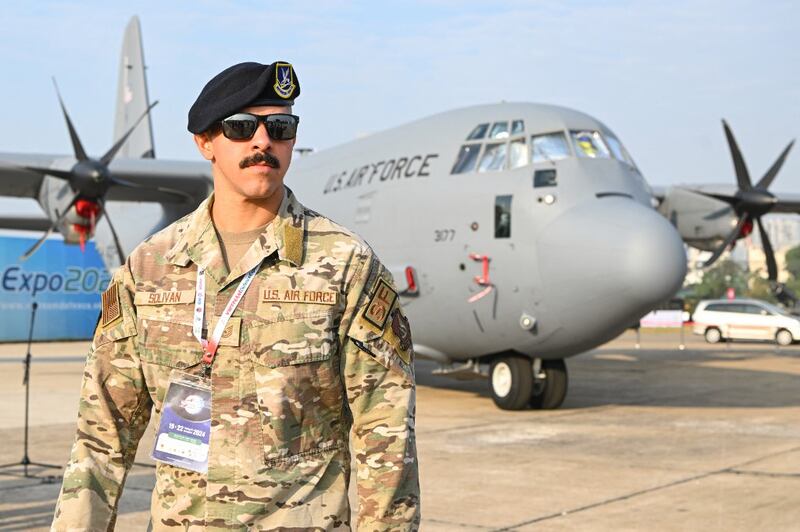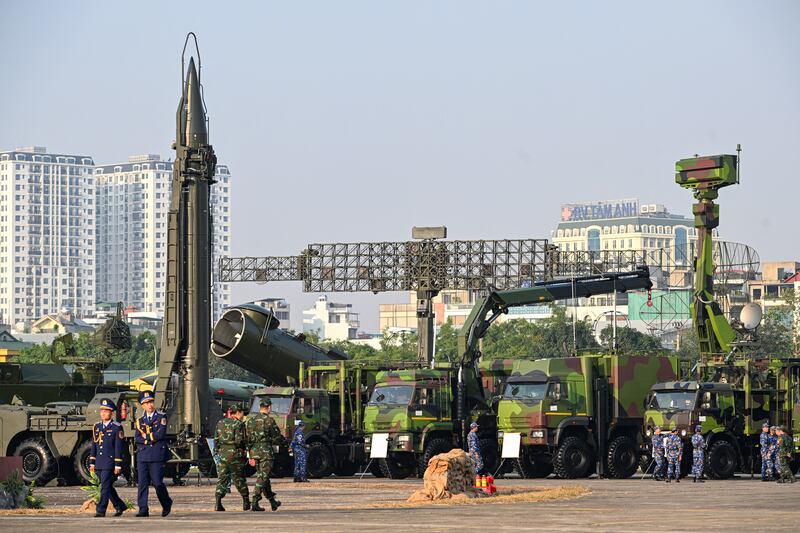Vietnamese firms are showcasing about 100 types of domestically produced weapons at an arms-trade fair that opened on Thursday in the capital, Hanoi, in the hope of gaining a foothold in the global market.
The Vietnam Defense Expo 2024, which runs until Dec. 22, is also expected to offer a chance to diversify the communist country’s supply sources and reduce its reliance on traditional partner, Russia.
Separately, Vietnamese Vice Minister of Defense Hoang Xuan Chien, speaking to his officials at the expo site on Tuesday, said Hanoi was placing an order for three C-130J Super Hercules transport aircraft from the U.S. firm Lockheed Martin.

The C-130J is the newest version of the C-130 Hercules, seven of which the Vietnamese military inherited from the army of the then South Vietnam after the end of the Vietnam War but was unable to maintain due to a lack of spare parts.
Last month, the Vietnamese air force received the first five of 12 Beechcraft T-6C Texan II training aircraft ordered in 2021, also from the U.S.
The purchases – although limited – mean stepping away from Russia’s domination of the supply of weaponry that Vietnam needs to safeguard its interest amid rising regional tensions, especially in the South China Sea, experts said.
According to the Stockholm International Peace Research Institute, Vietnam spends about US$1 billion a year on arms imports.

Some 250 exhibitors from 30 countries are at the arms fair this year, among them top defense companies from Europe, Russia, the U.S., Israel, Ukraine, and for the first time China and Iran.
Boeing, Textron Aviation Defense and Brazil’s Embraer are marketing various military aircraft that may in future replace Vietnam’s aging fleet of Sukhoi fighters and Mi-8 helicopters.
Russia has brought a modern Rubezh-ME coastal missile system and several varieties of armored vehicles for its display.
The Rubezh-ME could seriously challenge India’s BrahMos coastal anti-ship missile system which Delhi has been actively promoting to Hanoi but has yet to receive any response.
Vietnam’s rising star
Vietnam’s defense expo this year also carries two other important purposes, according to Nguyen The Phuong, a Vietnamese defense analyst at the University of New South Wales in Sydney, Australia.

Firstly, the fair should reassure the domestic public that the military is growing more powerful and capable of defending the country’s sovereignty.
“The second is about finding markets for Vietnam’s nascent defense industry as Hanoi wants to make defense a key economic sector in the new era,” said Phuong, referring to the new leadership under To Lam, a former minister of public security who has spoken openly about his aspiration of making Vietnam a modern, developed country via double-digit economic growth and bold system reforms.
Vietnamese companies under the defense ministry have put on an impressive display of an array of new and modified weapons including rockets and missiles, guns, ammunitions, vehicles, radars and a large selection of unmanned aerial vehicles, or UAVs, including self-destructing attack drones.
A major defense company – the Vietnam Military Industry and Telecoms Group, known as Viettel – has brought 80 high-tech products including surveillance radars, missiles, drones, communication devices, turbojets, and, for the first time, a ship-based integrated combat system.

The Viettel naval combat system that combines sophisticated radars and on-board sensors to track and guide weapons will be installed on future Vietnamese-built warships, including a class of fast-attack missile boats, according to sources.
Strengthening naval capabilities is a priority as Vietnam faces new security challenges in the South China Sea.
“Viettel is the poster child here – a strong defense and high-tech company,” said Nguyen The Phuong, adding that Viettel is expected to be a core company in Vietnam’s so-called defense industrial complex.
“The model of ‘defense industrial complex’ is somehow similar to those of Russia or China, where you have one core company, into which the state will invest money, and that core company will later distribute the resources to other smaller companies,” the analyst explained.

Besides Viettel, other domestic military firms showed off a new infantry fighting vehicle, or IFV, an indication that Vietnam has ambitions of developing its own tanks, IFVs and armored vehicles.
And there are signs of openness for the private sector to take part in the defense industry as a Vietnam-Italian joint venture, Flying Legend Vietnam, launched its first basic training and patrol aircraft for military use.
“Vietnam seeks to enhance defense cooperation to build trust, address common security challenges,” said Prime Minister Pham Minh Chinh at the opening ceremony.
It is “dedicated to building a revolutionary, regular, elite, and modern military force and strengthening its defense capabilities to protect the nation proactively,” Chinh added.
Edited by Taejun Kang.
